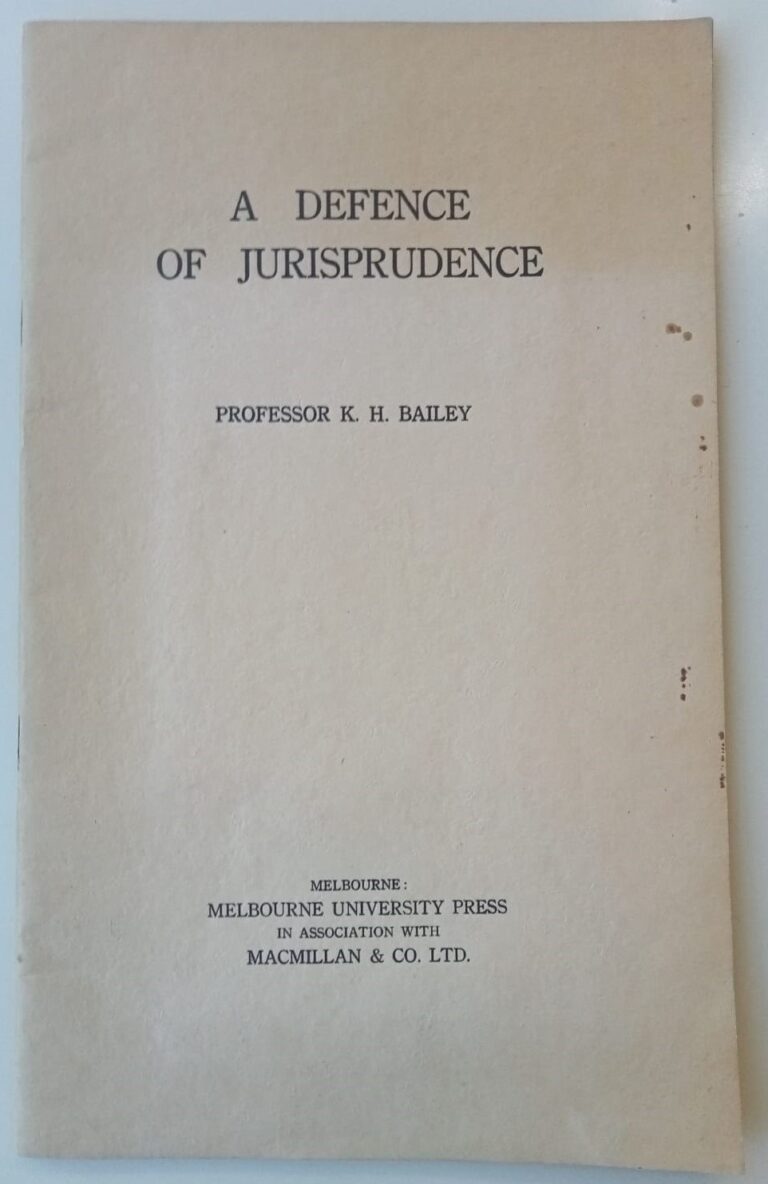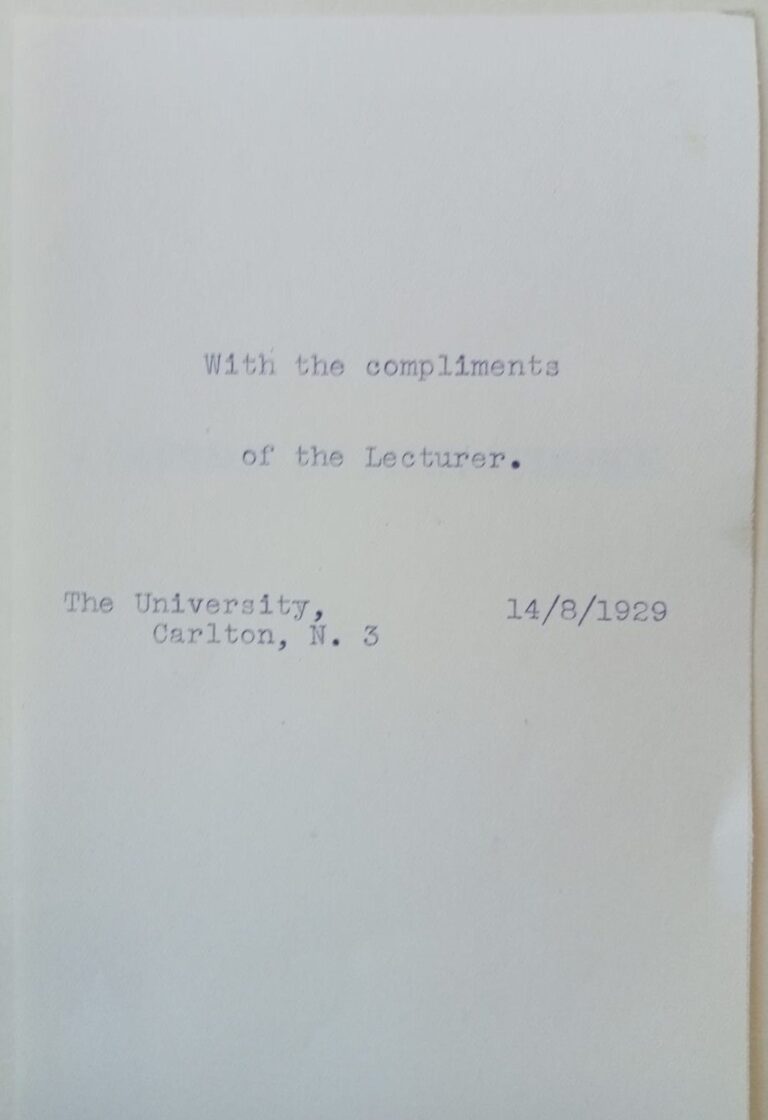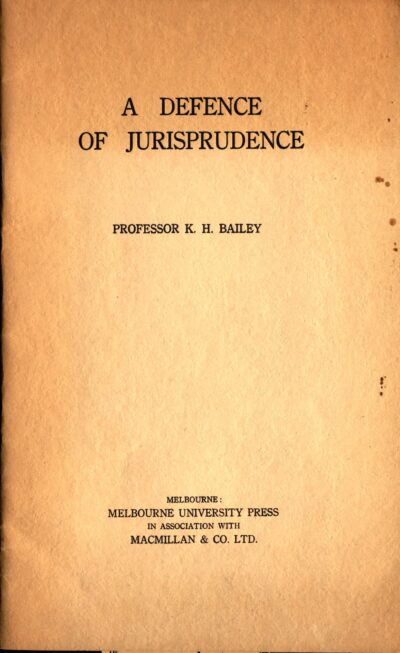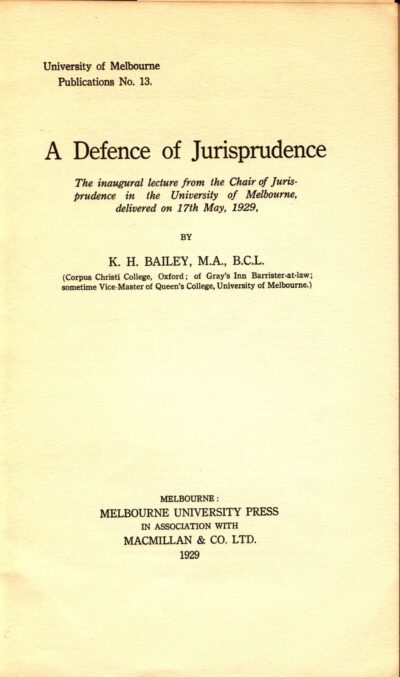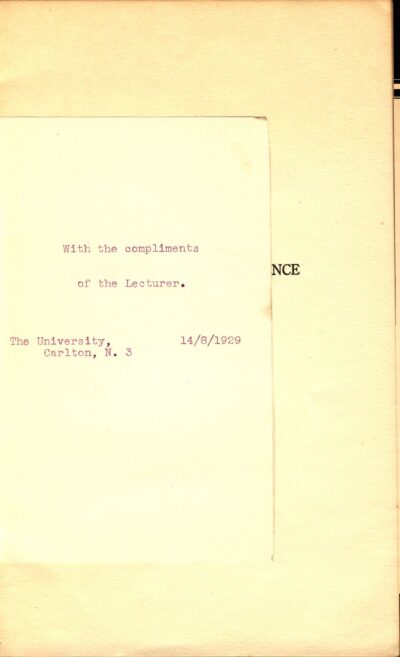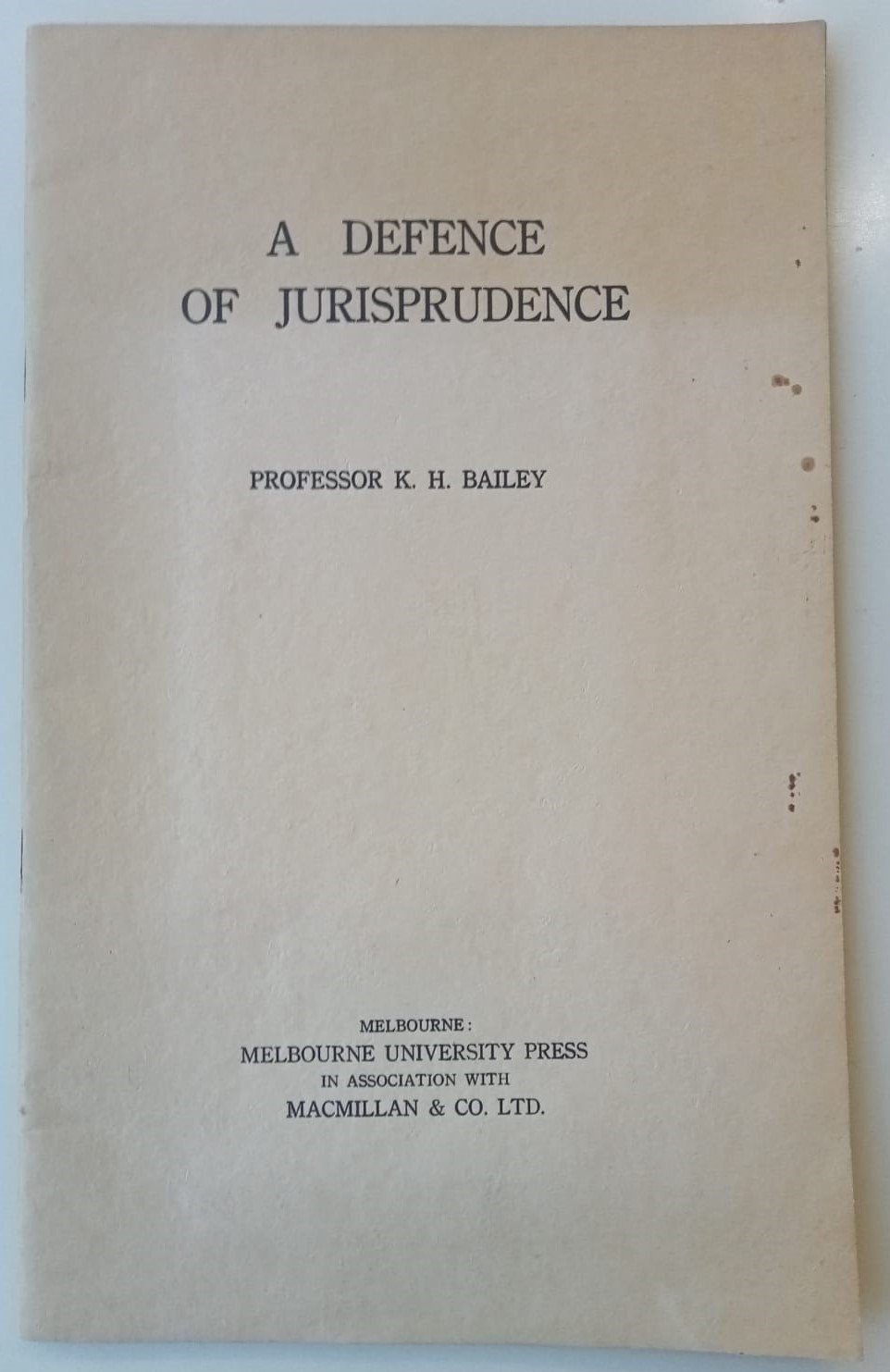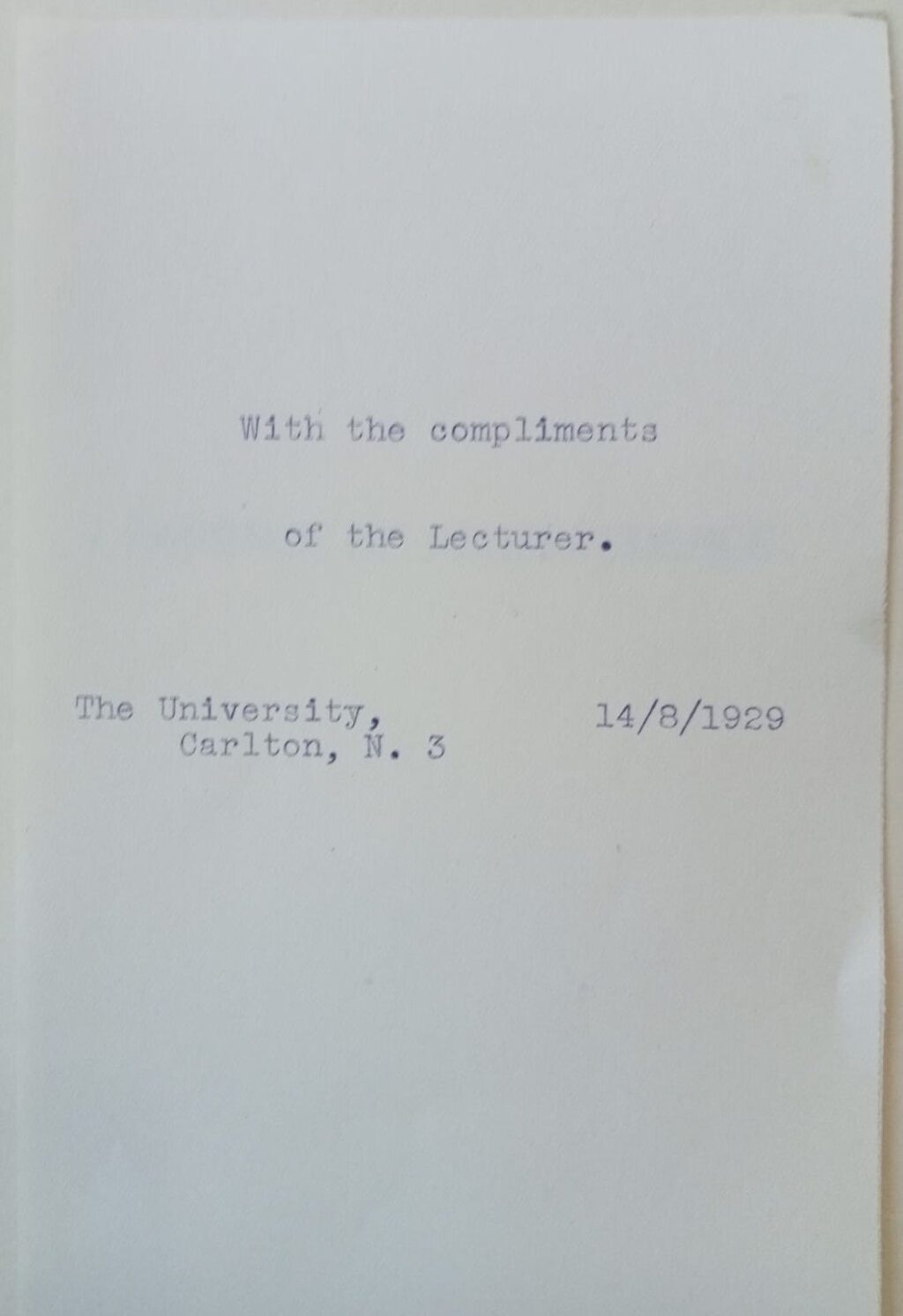K.H. Bailey, A Defence of Jurisprudence (1929)
Sir Kenneth Hamilton Bailey was an accomplished legal professor and long serving Solicitor-General of Australia, whose life intersected with Robert Menzies at several points.
Born in Melbourne in 1898 as the son of a bank-clerk, Bailey attended Wesley College becoming dux, senior prefect, captain of athletics and gymnastics, and overall sports champion just a few years after Menzies had graduated from the school. He then enrolled in the University of Melbourne as a member of Queen’s College, but decided to defer his studies to enlist in the AIF.
After the war, and on the back of his considerable academic and sporting prowess, Bailey won a Rhodes scholarship to attend Oxford and in 1924 was called to the Bar at Gray’s Inn, London (the Inn of Court that Menzies would come to be associated with). Returning to Melbourne, he was appointed vice-master of Queen’s College and served as a lecturer in history, before taking up a string of appointments in the law school, including Professor of Jurisprudence, Dean, and Chair of Public Law. Known as the ‘green Dean’ for his colourful choice of attire, Bailey ‘lectured in a frugal, concise style, emphasising legal analysis rather than the dynamic qualities which could be found in the law’. In 1933 he and Menzies both spoke at a conference on the Australian Constitution conducted by the Australian Institute of Political Science at Robertson in NSW, with their papers published in the book Studies in the Australian Constitution.
Bailey having developed an interest in international relations, in 1937 Menzies as Attorney Genral appointed him to represent Australia at the International Law Conference in Paris, and that same year he served as an Australian envoy to the eighteenth session of the League of Nations at Geneva. In early 1939 there was a debate in the House of Representatives as to whether Britain declaring war automatically committed Australia, and Bailey came out in nuanced support of Menzies’s view that when His Majesty was at war all his subjects were at war, suggesting that until Australia ratified certain sections of the Statue of Westminster the ‘orthodox’ view prevailed for Australia, but this was not the case for all the other Dominions.
Moving to Canberra in 1943, Bailey became a consultant in the Attorney-General’s Department, undertaking research for the Constitution Alteration (post-war reconstruction) Bill. Developing a close working relationship with H.V. Evatt, Bailey was appointed as an adviser to the Australian delegation at the United Nations Conference on International Organisation, having input on the Statute of the International Court of Justice and the final draft of the Charter of the United Nations.
In 1946 Bailey was appointed Secretary to the Attorney-General’s Department and Solicitor-General of the Commonwealth, and, holding no grudge about his close association with Evatt, on coming to power Menzies would keep Bailey in the role in line with an overall policy of continuity in the public service. For the Menzies Government Bailey would advise on the validity of new legislative powers and how to meet ensuing constitutional challenges, while also attending sessions of the UN General Assembly and leading missions to UN Conferences on the Law of the Sea. Capping this off, in 1964 Menzies appointed Bailey as High Commissioner to Canada.
A Defence of Jurisprudence is a publication of a lecture Bailey delivered when he became the University’s first professor of jurisprudence and consequently took the opportunity to justify the role. In it, Bailey explained that jurisprudence was concerned with the theoretical framework of the law as opposed to its practical application. It was in effect the philosophy, theory and science of the law. To those who thought that legal training should focus on practicalities, Bailey insisted that universities were responsible for training not just ordinary practitioners of the law, but its thought leaders. Australia was in dire need of locally written textbooks, as professors had been relying on British books which they had to instruct students to annotate according to local specificalities. Not only that, but because British and Australian statutes were increasingly diverging, Australian universities were increasingly relying on outdated British books which at least did not have so many irrelevant additions. It was therefore necessary for legal academia to come to grips with first principles, so they would be in a position to produce worthwhile texts for local use.
Menzies’s copy of the lecture was given to him ‘With the compliments of the Lecturer. The University, Carlton, N. 3. 14/8/1929’, and serves as evidence not just of his long association with Bailey, but also of his close relationship with the University which lasted throughout his life. Menzies was highly active in University organisations in the 1920s and with his love of the Melbourne legal community there is a very high chance that he would have attended the lecture. Menzies’s connection with the University would later be capped by his appointment as Chancellor, while Bailey is now commemorated by an annual Sir Kenneth Bailey Memorial Lecture.
You might also like...
Sign up to our newsletter
Sign up for our monthly newsletter to hear the latest news and receive information about upcoming events.

